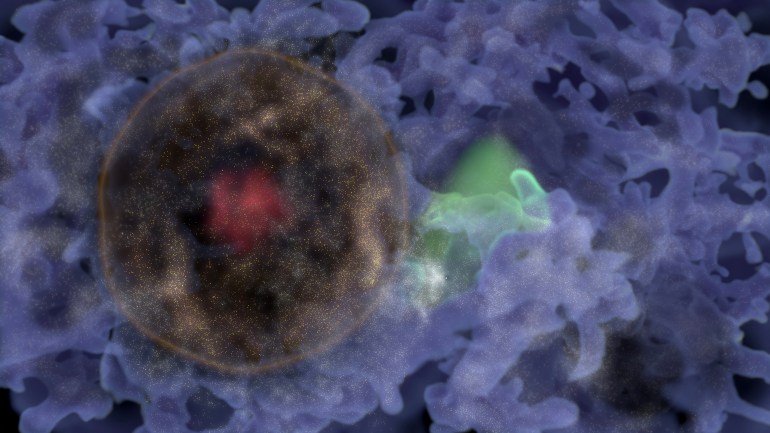The Milky Way bubble is 10,000 times wider than the Milky Way and lies 820 million light-years from our own galaxy.
An international team of astronomers has discovered the first „bubble of galaxies,” an unimaginably massive cosmic system measuring a billion light-years across, thought to be a fossilized remnant after the Big Bang.
The bubble is 10,000 times wider than the Milky Way galaxy, according to scientists who discovered it Published Their findings this week.
„This amazing bubble is a fossil from the Big Bang, when the universe formed 13 billion years ago,” said team member Cullen Howlett, from the University of Queensland’s School of Mathematics and Physics, in comments published Thursday.
„We didn’t look for it, but the system was so large that it spread out across the edges of the sky we were analyzing,” Howlett said in an interview published by the University of Queensland.
„It dwarfs many of the larger known structures, such as the Sloan Great Wall and the Buttes Supercluster, which are actually part of this bubble,” he said.
„What makes it even more incredible is that it’s in our back yard,” he added.
The bubble is about 820 million light-years away from our own galaxy, in what astronomers call the nearby universe.

The discovery provides a clearer picture of the universe’s expansion rate, and the findings could revolutionize cosmology, Howlett said.
„Because this bubble is larger than expected, the universe has expanded more than originally predicted,” he said.
„We are now one step closer to a major shift in cosmology, where the entire model of the universe will have to be re-evaluated.”
’no big deal’
Fellow team member Daniel Pomaret, an astrophysicist at France’s Atomic Energy Commission, said the interstellar bubble could be thought of as a „spherical shell with a heart.”
Inside that heart is the Boots Supercluster of galaxies, surrounded by a vast void sometimes called „The Great Nothing.”
The shell already contains several interstellar superclusters known to science, including a massive structure called the Sloan Great Wall.
The discovery of the bubble, described in the research he co-authored, published this week in The Astrophysical Journal, was „part of a much longer scientific process,” said Pomaret.
This discovery confirms a phenomenon described in 1970 by Canadian-American cosmologist and future physics Nobel laureate – Jim Peebles.
He hypothesized that in the primordial universe – then a ball of hot plasma – the mixing of gravity and radiation produced sound waves called baryon acoustic oscillations (BAOs).
As the sound waves rippled through the plasma, they formed bubbles.
About 380,000 years after the Big Bang, the process stopped as the universe cooled and froze the shape of the bubbles. Bubbles grew larger as the universe expanded, just like other fossil remains after the Big Bang.
Astronomers previously detected signals of BAOs in 2005 when looking at data from nearby galaxies. But the newly discovered bubble is the first known single-baryon acoustic oscillation, the researchers report.
Astronomers called their bubble Ho’oleilana — meaning „sent out murmurs of warning” — taking the name from a Hawaiian creation mantra.
The name comes from the study’s lead author, University of Hawaii astronomer Brent Tully.

„Oddany rozwiązywacz problemów. Przyjazny hipsterom praktykant bekonu. Miłośnik kawy. Nieuleczalny introwertyk. Student.
